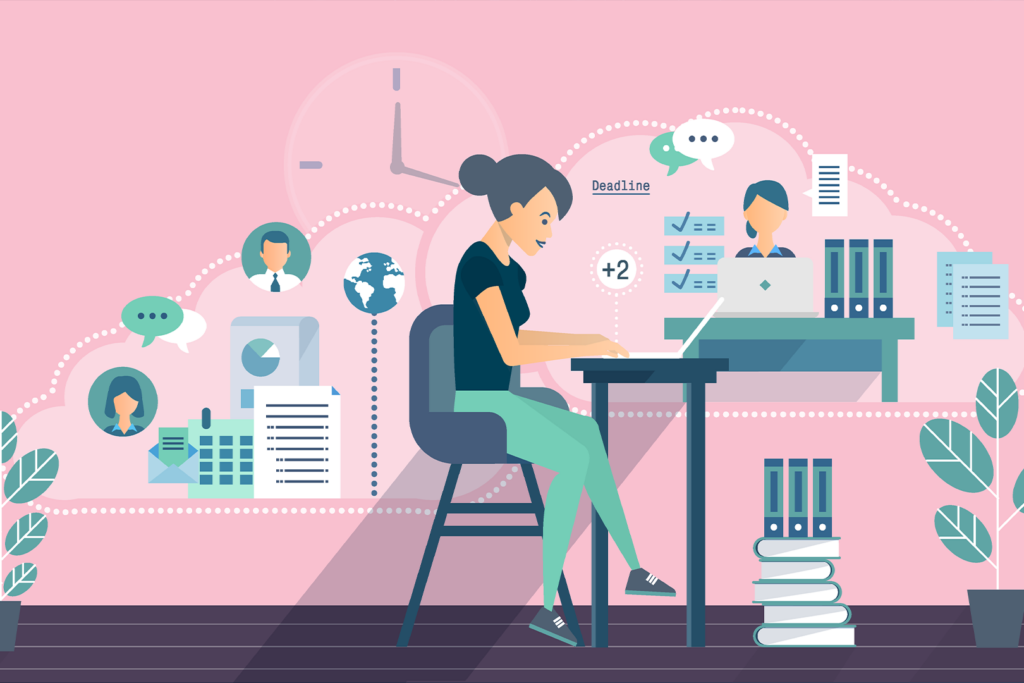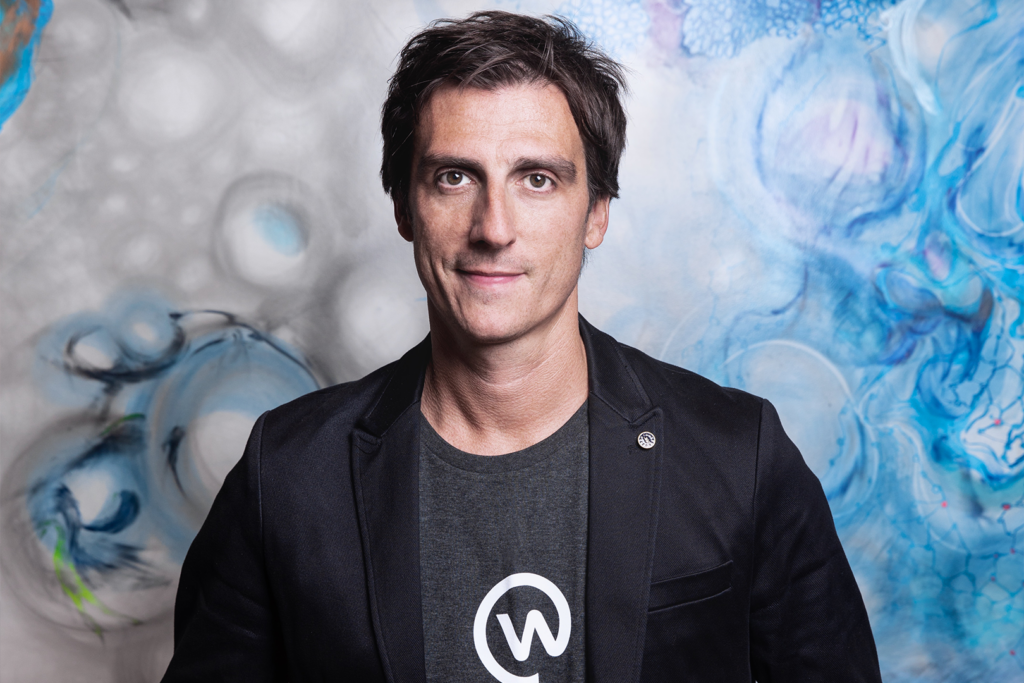
Since its foundation in 2004, Facebook’s aim has been to connect the world.
It has largely succeeded – the social media network has nearly three billion monthly active users. Today, despite huge expansion and some high-profile controversies, the company’s mission statement remains the same: “To give the power to build community and bring people closer together”.
As the COVID-19 pandemic spread around the world last year, business leaders faced their own challenges around “community”. Workforces that were so embedded in offices and established methods of collaboration had to adapt to being permanently apart. Months on, it’s fair to say that many organisations are still adjusting to remote working at scale.
How do you ensure teams work well together when they are physically apart? How do you make individual employees feel valued and fulfilled when they’re isolated in their home offices? Well, Facebook has its own solution in the sea of workplace collaboration tools currently on the market. Could this giant of Silicon Valley make serious inroads in this space, and go head-to-head with the likes of Slack and Microsoft Teams?
Julien Codorniou certainly thinks so, but then he would. As Vice President for “Workplace from Facebook” – the full name of Facebook’s offering – Codorniou is one of the faces of the product and is responsible for its business and partnership teams. Workplace launched in 2016 and had steady success before the remote working surge in 2020.
“In October 2019, we announced that we had three million paid subscribers. By the end of March 2020, we had five million,” Codorniou tells Digital Bulletin. “There has been an appetite for a solution like Workplace, which can help companies to make sure everybody can be successful wherever they have to work from.”
That factor is what Codorniou says is Workplace’s strength: that it can be used by any employee, at any sized company and in any industry. Collaboration software is often tailored for office-based workers but what Codorniou calls the “magic of Workplace” is its versatility, especially when it comes to employees on the frontline of businesses.
“It works for everybody in the company, from the CEO to the frontline, including people who have never had email, who have never had a desk, and people who work in hospitals or factories. There aren’t a lot of products like that in the market. IT has become very expensive and can leave a lot of people behind – Workplace is very democratised.”
Workplace utilises familiar Facebook features like Groups, Chats and Rooms to get people working together. It even offers users their own personalised “work” news feeds, which deploy artificial intelligence to deliver relevant updates whether you’re the CEO of the organisation or a worker on the factory floor. It also integrates with the likes of Office 365, G-Suite and Salesforce.
“There is a big shift in the mindset of executives and CEOs. They are starting to understand that the most valuable assets of their companies are their employees
Codorniou says pushing such services out to every employee offers big advantages for companies. He believes business leaders are only now beginning to recognise the true value its workers can deliver for them if armed with the right tools – and how building a community through effective communication can also encourage people to stick around.
“Engaging properly with your employees means they’re happier and they will stay longer,” he says. “If you think about employee retention and satisfaction, engagement with a SaaS application can have a direct impact on your bottom line. If you engage with people, they feel they have a voice, and you keep them longer and save money.
“There is a big shift in the mindset of executives and CEOs. They are starting to understand that the most valuable assets of their companies are their employees. And the employees on the frontline know about the customers and they know about the market. So the next frontier of IT is connecting the frontline.”
Organisations that have put their trust in Workplace include Walmart, Spotify, Heineken and Domino’s; multi-billion dollar companies with workforces all over the world. But the story of Workplace’s emergence is not dissimilar to Facebook’s own – just as Facebook was first built for students at one university, Workplace was only initially conceived as a tool for Facebook’s own staff.
That first-gen version of Workplace launched in 2010, with its success as a means of collaboration picked up on by Facebook’s customers, who asked if it was something which they could embed in their own organisations. Another revenue stream was born.
“Customers were saying that they had people who were using WhatsApp or Messenger but they were not a proper part of the IT stack, so why couldn’t we give them something like Facebook but adapted to the needs of companies and the IT department?” says Codorniou.
“Hearing these signals, we decided to give Workplace a try outside of Facebook, and then we saw that the exact same thing that happened inside Facebook happened outside. People were more engaged, people were suddenly feeling that the distance between them had been reduced. People felt part of the community and like they belonged to a larger organisation; they understood who they worked for and who they worked with, and they felt connected.”
When COVID-19 struck, Workplace – like its competitors – knew that it had to pivot its strategy. Codorniou says in the first wave of the pandemic, he and his team spent a lot more time engaging directly with its customers to ensure their transition to remote working was a smooth one. The company also accelerated development around video conferencing, launched an intranet solution on top of Workplace and grew its ecosystem of partners.
One of the biggest lessons for companies from COVID-19, according to Codorniou, is that day-to-day operations cannot simply be run over a chat app.
“For employees this can create the fear of missing out, it puts pressure on people, you fear that if you leave your mobile phone off for a few hours, you will come back and be overwhelmed. I think the world deserves better than that, and COVID-19 highlighted that two-speed communications tools are needed,” he says.
“What we have on Workplace is the ability to work in real-time with a chat app, but also asynchronous with Groups and news feeds. So if I need an answer in five seconds, we can use chat, but if I need more time to digest information, or to manage an organisation in different timezones and in different languages, async is better suited.”

For those organisations now fully up to speed with remote collaboration, one of the next steps forward will be the introduction of more automation into the tools themselves in order to drive greater business efficiency. Codorniou says Workplace is on top of this trend, as evidenced by some of the company’s recent activity.
In November, it announced a deeper collaboration with ServiceNow around “virtual” agents, a technology that allows users to get instant support and receive updates on in-progress requests, all within the Workplace platform. A chatbot was also recently built in partnership with DocuSign to send, track, and manage electronic agreements.
“Customers want to go from communication to automation,” says Codorniou. “How do you help get the job done faster or better? How can you help people get trained faster? How can you do things like inventory management, shift management or expenses management, on your communication platform using bots and chatbots? This, for me, is where we are going.
“They don’t just want to talk about the job, they also want to get the job done faster and augment people with technology.”
What else might Workplace users explore in the future? Codorniou believes there will be increased demand for virtual and augmented reality solutions, again brought about by the pandemic.
“At one company we work with, they train their employees with an Oculus device, so they don’t have to bring people to their training centre every day. It’s one of those things that we said would take 10 years to happen, but because of COVID-19 it took six months,” he says.
“I think AR/VR is something that we will see more and more – and not just for research scientists, but for everyone. It will be democratised. It will help save money and to provide different experiences in a post-COVID world. Why would you ask 500 people to come to training at the training centre, when you can train them at home? In the pre-COVID world it sounded like science fiction, but in the post-COVID world it sounds like a good way to save time and to give great experiences to people.”


